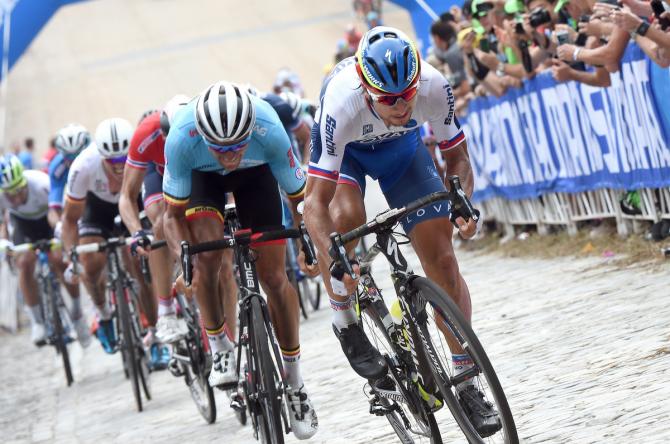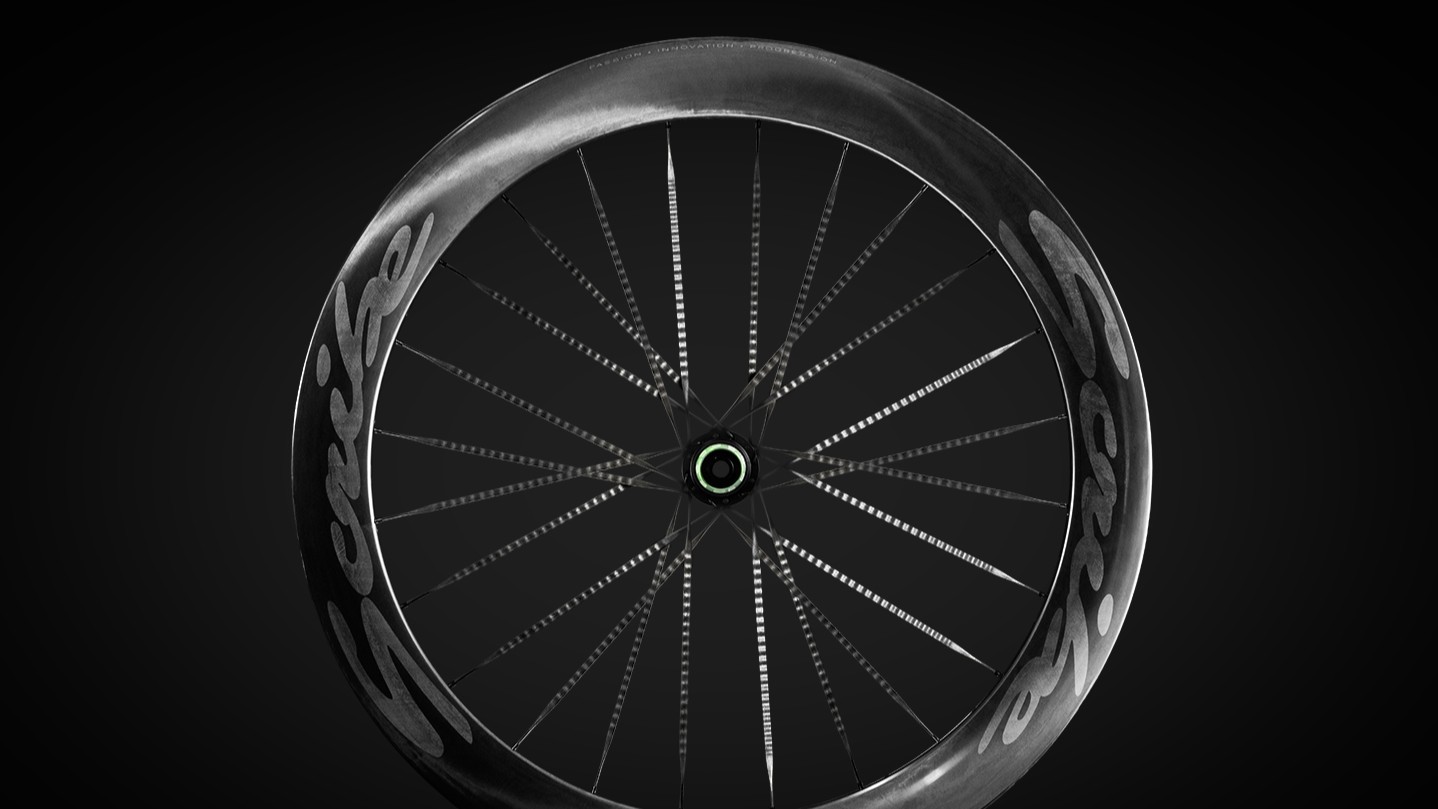Sagan announces his new-found depth with rainbow jersey win
Personal and professional growth could signal the start of a new era of dominance for the 25-year-old Slovakian
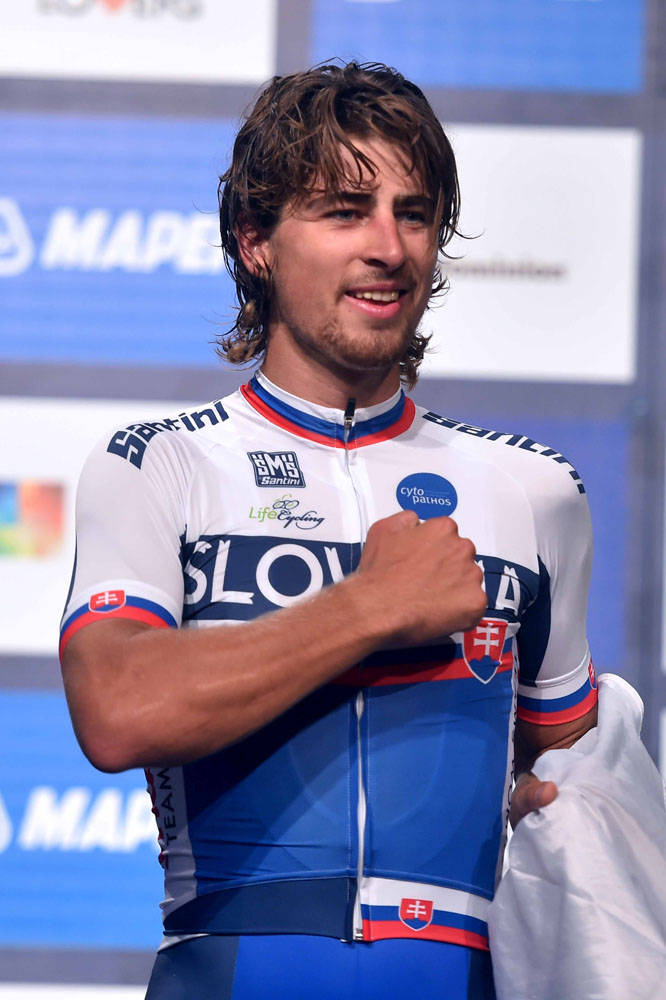
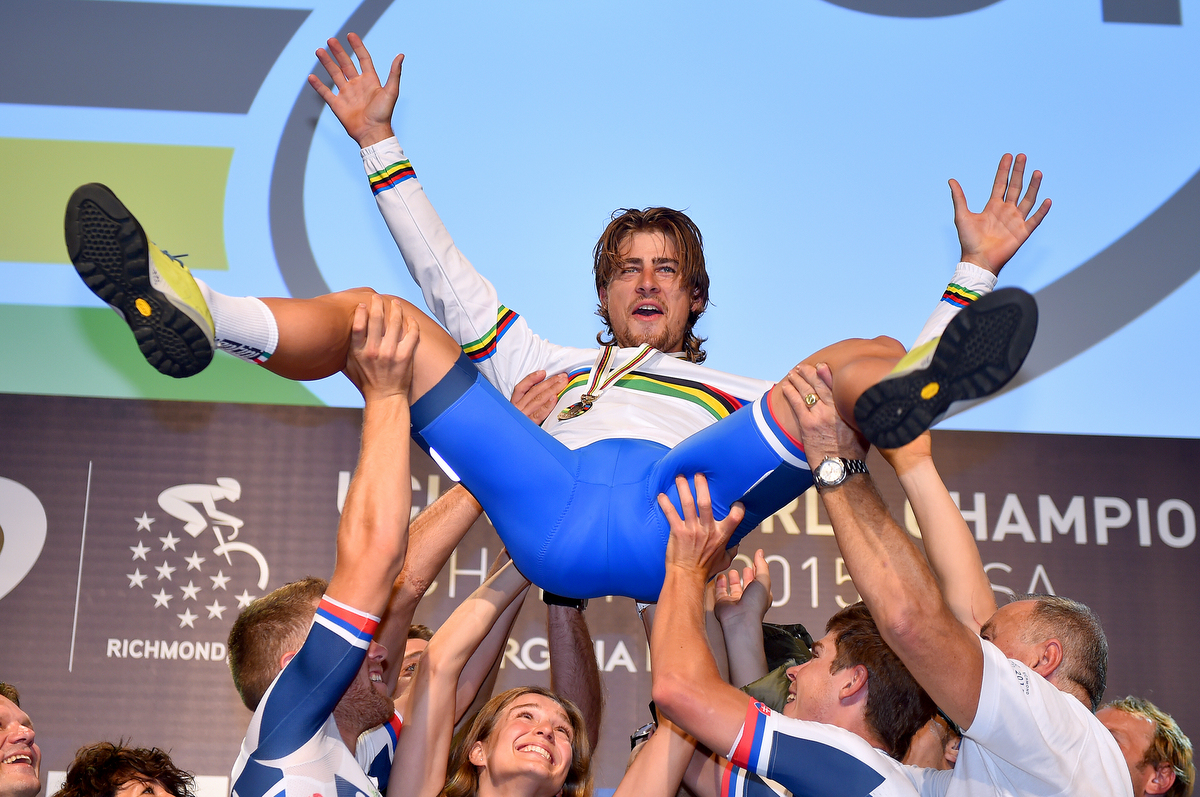
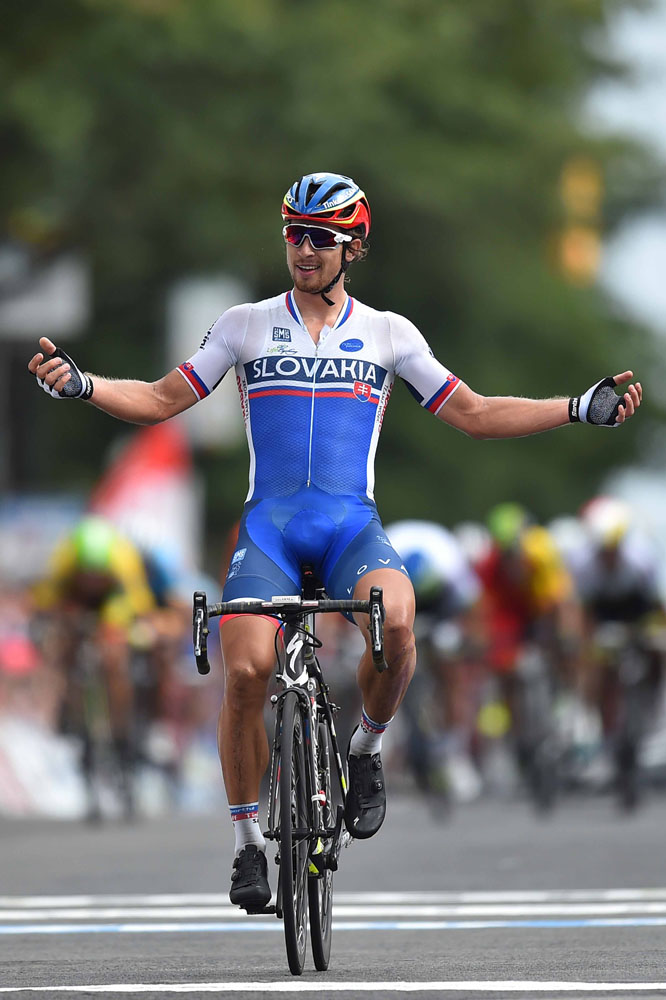
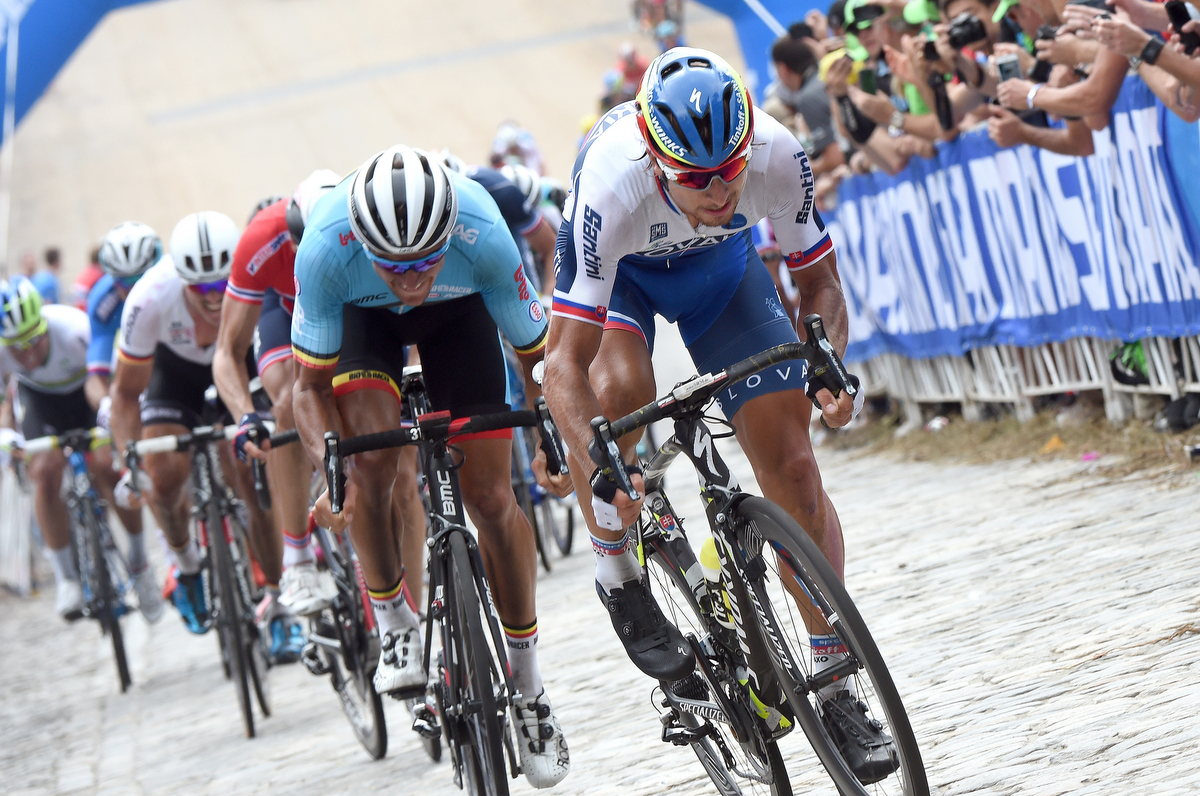
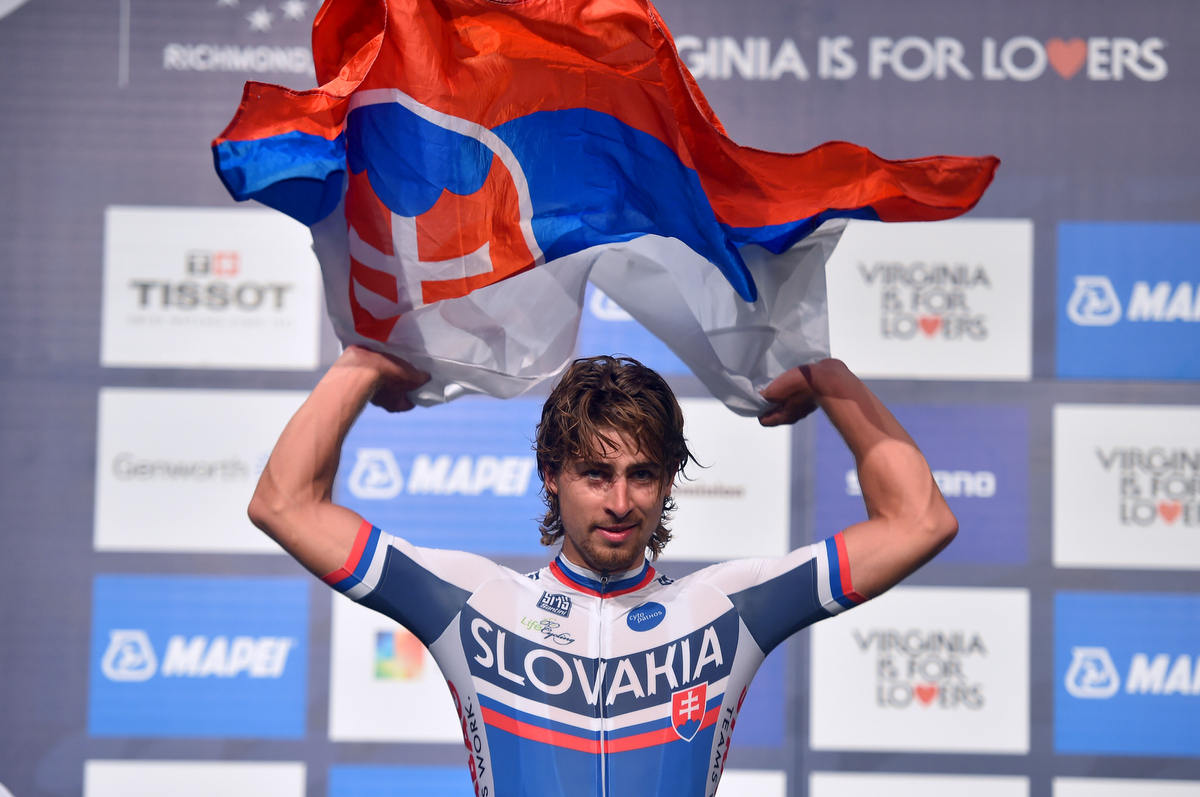
Newly crowned World Champion Peter Sagan wants you to know something: Bike racing is not real life. Like all professional sports, it's entertainment, a diversion from the struggles of everyday living.
That was the subtext of Sagan’s pronouncement on the Worlds podium in Richmond last week when he used his new platform as World Champion to call attention to the migrant crisis in Europe.
Asked in the post-race press conference why his first thoughts following the race were focused on the “problem in Europe” rather than his own accomplishment, Sagan used his sometimes-halting English to offer a simple explanation.
The Cyclingnews Podcast: Interviews with Sagan, Matthews and Kristoff
Peter Sagan's World Champion's jersey design revealed
The moment Peter Sagan's Worlds almost went up in smoke
Video: Sagan and Armitstead on what winning the Worlds means to them
News shorts: First look at Peter Sagan's world champion's bike, Majka leads Tinkoff-Saxo at Lombardy
“I was finding motivation in the world. I think it's a big problem in Europe with all the stuff that is happening. I want to just say this was very big motivation for me.
"The population of the world has to change because I think the next years will be all different and also I think this competition and the sport is nice for the people, a real motivation. The situation is very difficult. I want to say to all the people: change this world.
“Why?” Sagan responded. “Because we live in the moment now, but maybe in the future, I don’t know, maybe we are not here. That’s why it’s more important.
“I wanted to tell because I don’t see inside the politicians on this stuff. But I wanted to tell about the people because I was thinking about it and how we can change the world. One man is nothing, but we are more. We can change. It’s about the future. I am very happy for this, but I want also for another generation to be here.”
It was a revealing moment for the 25-year-old Slovakian, who, throughout his relatively brief career, has built a reputation as a fantastically talented bike rider and a fun-loving jokester whose oftentimes-precocious attitude has both gotten him into trouble and earned him a multitude of admiring fans.
But Peter Sagan is growing up. The cheeky kid who caused a firestorm when pinched the rear-end of a podium hostess at the 2013 Tour of Flanders has a steady girlfriend now and a multi-million dollar contract (although it’s widely rumoured that he was forced this year to choose between taking a pay cut or leaving Tinkoff-Saxo after his early season performances didn’t match expectations).
The rest of the peloton should take notice of Sagan’s growth as a person and a bike rider, and his competitors should probably be a little frightened; we may have just witnessed the beginning of the Sagan era.
Throughout the early season, Sagan struggled to get the tactics right in the Spring Classics, knocking on the door in most races but failing to deliver the wins team owner Oleg Tinkov was paying him for.
In Richmond, however, Sagan rode a perfect race and took the biggest win of his career – his first in a major one-day race – in front of the world’s best.
He did it by understanding the Richmond circuit would allow riders just one bullet to fire, and Sagan fired his at the perfect time. On the final lap, Sagan attacked from a lead group of about 40 riders on the second of two cobbled climbs that came in quick succession in the last 4km.
He quickly opened a gap, and while the Belgian contingent in the press mixed zone declared he had gone too early, used his handling skills to build the advantage he held over the final uphill drag to the finishing straight, where he won in front of the charging bunch by just three seconds.
“In front of us the climb was still a long way until the finish and then there was a descent and then a little flat and then the climb,” Sagan said when asked about his tactics in the post-race press conference.
“It was very hard, because the climb was short, but after the climb the last 800 metres was very tough. If you go alone from that moment until the finish it was far away. And when you see the group behind everybody was going full gas to come to the finish in the sprint.
“But I said, ‘Yeah, I already tried, I have to go.’ Because if I look back or I stop to pull and I wait to sprint I can do second, third, fourth, fifth. But when I decide I go now and I am alone, it was the best moment, because after the cobblestone climb if I am with some riders, for sure they don’t pull me. So that was the crucial point to be alone.”
Sagan’s deft tactical win was all the more impressive considering his Slovakian team had just three riders – his brother, Juraj, and Michal Kolar – not the powerhouse nine-man squads of Belgium, Spain, Italy, France, Australia, Germany, Netherlands and Colombia.
“Yeah, the big countries,” Sagan said when asked if he was able to fly under the radar on a smaller squad (as if that’s possible for one of the world’s best-known riders). “I don’t know what I can say about it, because they can do some strategy, but I’m not here for strategy for making the race or something. I can do just what I did.”
What Sagan did was beat the best riders in the world on their own terms and at great disadvantage, then showed his heart and maturity by turning the well-earned attention away from himself and toward the problems of the real world. The new tactically savvy and emotionally maturing Peter Sagan could be a force for many years to come.
He may as well have gotten up on that podium, looked out toward his competitors and said, “Be afraid. Be very afraid."
The latest race content, interviews, features, reviews and expert buying guides, direct to your inbox!
Growing up in Missoula, Montana, Pat competed in his first bike race in 1985 at Flathead Lake. He studied English and journalism at the University of Oregon and has covered North American cycling extensively since 2009, as well as racing and teams in Europe and South America. Pat currently lives in the US outside of Portland, Oregon, with his imaginary dog Rusty.
